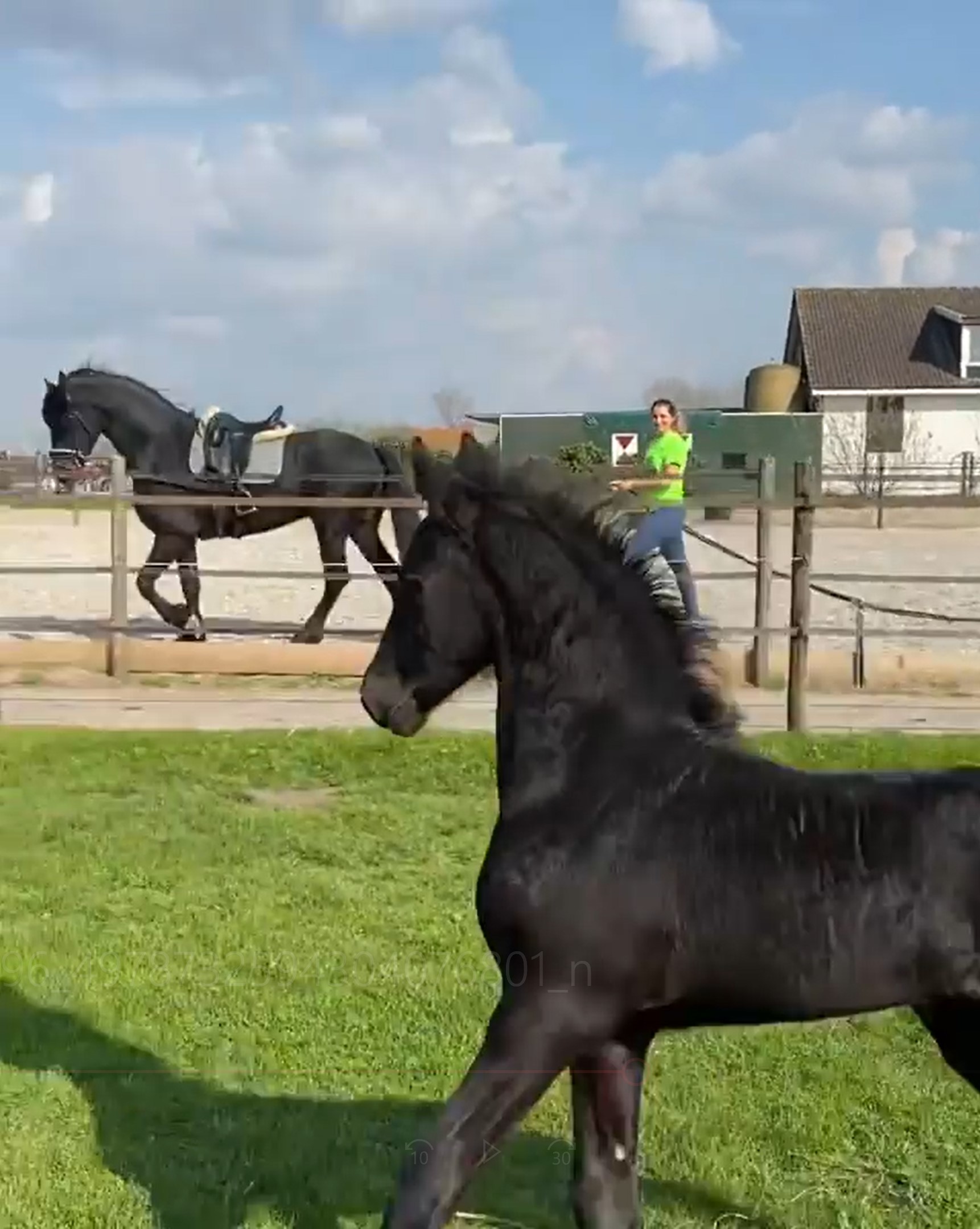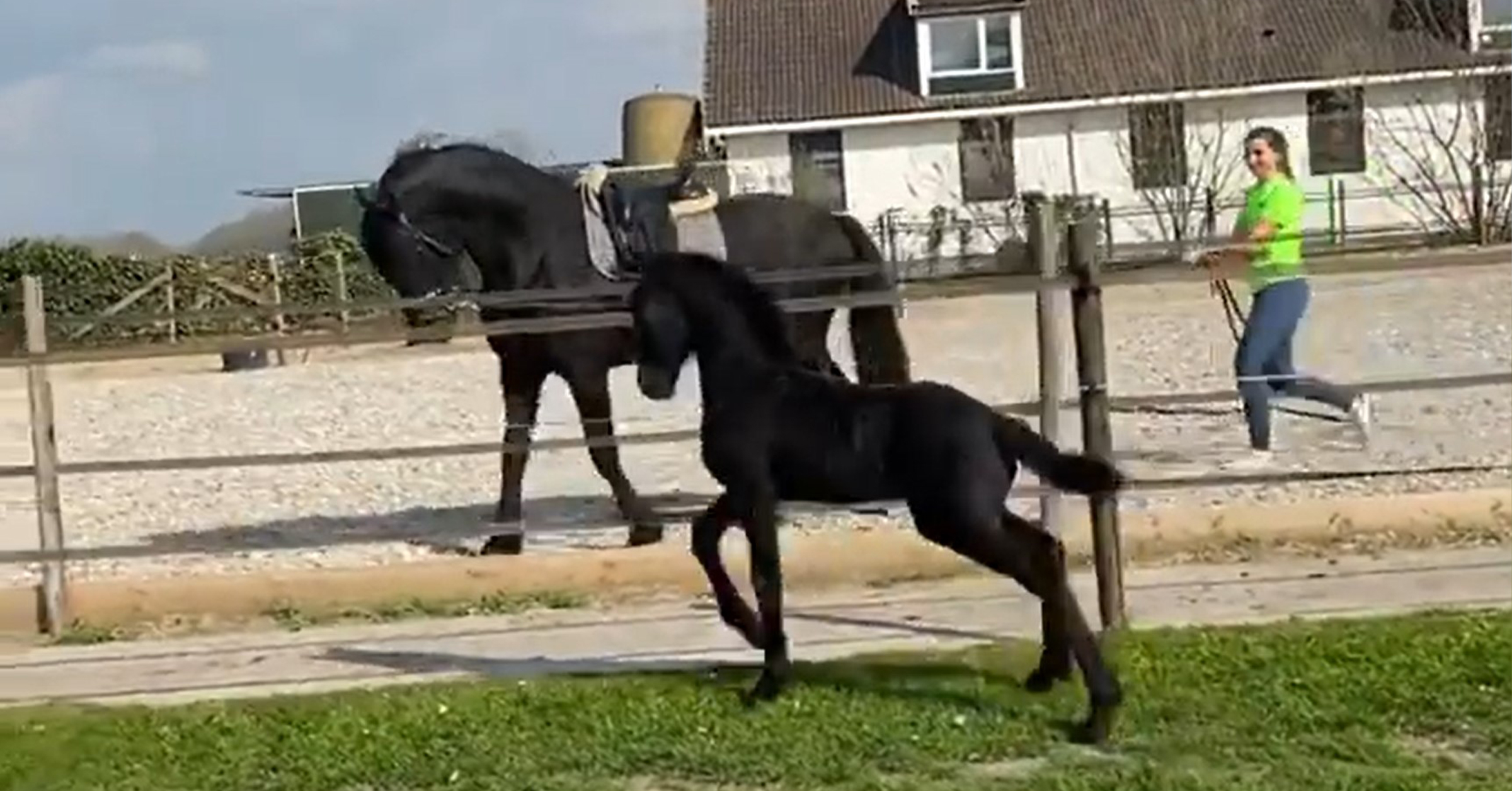What do you think? Will this foal become a professional dressage horse when he will grow up? As we can see, he looks very graceful already, moving confidently, with his head up and his posture straight.
I’m sure he would be great for dressage shows. Ideally, the dressage athlete has an “uphill” appearance and is the picture of strength, balance, and symmetry. A dressage horse should be proportionate when looking at the length of the front end, back, and hindquarter. Ultimately, the horse’s conformation affects his soundness, quality of gaits, and balance.

A good dressage horse will have excellent movement at all the gaits, good conformation, and the right attitude, which we can already notice at this beautiful foal. In fact, a successful dressage horse will have a bit of a spark. Since dressage requires lots of precision, horses must be highly trainable. Horses should be agile while moving with grace and power.
Dressage is the ultimate competition for many horses and their riders and its popularity continues to escalate. It is considered by some observers to be the most demanding of all athletic equestrian sports. The horse is required to compete in all the paces as well as perform exacting movements. So you should be very careful when picking a horse for dressage training.

And also it’s very good for your horse. Dressage achieves balance, suppleness, and obedience with the purpose of improving and facilitating the horse’s performance of normal tasks. If the advanced training stage is reached, dressage may become an objective in itself.
Sometimes it will depend on the horse’s personality, on the skill of the rider, on the training system they follow. Generally, though, the process follows a few basic steps – first teaching the horse to walk, trot, and canter, then working on lateral movements, transitions, extension, and collection.
